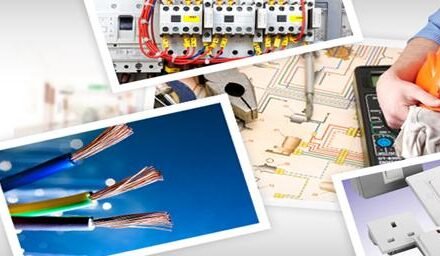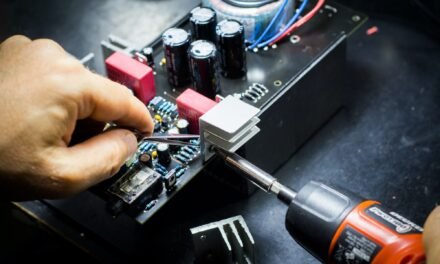Electrical wires and cables are essential components in electrical systems, but they can encounter various issues that may affect safety, performance, and reliability. Understanding the common problems that arise with electrical wires and cables—and how to prevent them—is crucial for maintaining safe and efficient electrical systems. Below are some of the most common problems, along with preventive measures:
1. Wire and Cable Overheating
- Problem: Overheating occurs when cables carry more current than they are designed to handle, which can lead to insulation degradation, fire hazards, or electrical shorts.
- Causes: Overloaded circuits, undersized wires, poor ventilation, or poor connections.
- Prevention:
- Proper Sizing: Always select wires and cables that are appropriately rated for the expected current load (considering the wire gauge, material, and insulation type).
- Circuit Protection: Use fuses, circuit breakers, or overload protection devices to prevent excessive current flow.
- Adequate Ventilation: Ensure that cables are not subjected to environmental factors that may cause excessive heat buildup, such as poor airflow or proximity to heat sources.
2. Short Circuits
- Problem: A short circuit occurs when there is an unintended connection between two conductors (live and neutral or live and ground), causing a high flow of current that can lead to fire or equipment damage.
- Causes: Damaged insulation, loose connections, improper installation, or wear and tear.
- Prevention:
- Insulation Integrity: Inspect cables regularly for damage to the insulation, such as cracks, cuts, or abrasions. Replace damaged wires immediately.
- Proper Installation: Ensure that wires are installed correctly, with proper insulation and secure connections.
- Use Conduits: Run cables inside conduits to protect them from external mechanical damage and prevent accidental shorts.
3. Wire Corrosion
- Problem: Corrosion of wires or cables can occur when exposed to moisture, humidity, or chemicals, leading to increased resistance, overheating, and eventual failure.
- Causes: Exposure to harsh environments (e.g., saltwater, high humidity, or chemicals), improper insulation, and aging of materials.
- Prevention:
- Use Corrosion-Resistant Materials: Choose cables and connectors made of corrosion-resistant materials (e.g., copper-clad aluminum, tinned copper, or galvanized steel) for areas exposed to moisture.
- Seal and Insulate Properly: Ensure that cables are properly sealed and insulated to prevent water ingress.
- Use Protective Coatings: In areas with high humidity or corrosive elements, use cables with protective coatings or jackets that prevent exposure to environmental factors.
4. Cable Stretching or Mechanical Damage
- Problem: Stretching, crushing, or pulling of cables can damage the internal conductors or insulation, resulting in faults or wire breakage.
- Causes: Improper handling during installation, heavy traffic areas, or sharp bends.
- Prevention:
- Proper Installation: Use cable supports such as cable trays, raceways, or conduits to prevent cables from being pulled or stretched.
- Avoid Sharp Bends: Ensure that cables are installed with smooth curves, avoiding sharp bends that can damage the insulation or conductors.
- Use Protective Covers: Where mechanical damage is possible, use protective covers or conduits to shield cables from impact or abrasion.
5. Loose or Poor Connections
- Problem: Loose or improper connections can cause arcing, heating, and eventually failure of electrical circuits.
- Causes: Poor installation, corrosion, or inadequate tightening of connectors and terminals.
- Prevention:
- Secure Connections: Always ensure that connections are made with proper tools, and that terminals are tightened to the manufacturer’s specifications.
- Inspection: Regularly inspect connections for signs of loosening, corrosion, or wear.
- Use High-Quality Connectors: Use quality connectors and terminal blocks rated for the specific application and environment.
6. Cable Insulation Breakdown
- Problem: The insulation around cables can deteriorate over time due to factors like exposure to heat, ultraviolet light, or chemicals, leading to short circuits or electric shocks.
- Causes: Exposure to high temperatures, ultraviolet radiation, chemicals, or physical stress.
- Prevention:
- Proper Insulation Material: Use cables with appropriate insulation ratings (e.g., PVC, rubber, or Teflon) for the specific environmental conditions (temperature, moisture, chemicals).
- Protect from UV: For outdoor installations, use UV-resistant cables or protective sheathing to prevent UV degradation.
- Avoid Physical Stress: Ensure cables are not subjected to unnecessary mechanical stress or abrasions, such as rubbing against rough surfaces.
7. Wire Overload or Overcurrent
- Problem: Overcurrent occurs when a circuit is subjected to excessive current, which can lead to overheating or even fires.
- Causes: Incorrectly sized cables, missing fuses or circuit breakers, or faulty electrical equipment.
- Prevention:
- Proper Sizing: Use cables that are properly rated for the expected current load, considering factors like wire gauge and material type.
- Circuit Protection: Install fuses or circuit breakers to protect against overcurrent conditions.
- Regular Inspections: Perform regular checks of the electrical system to identify signs of overloading or overheating.
8. Electromagnetic Interference (EMI)
- Problem: Electrical cables can act as antennas and pick up unwanted electromagnetic interference (EMI), which can affect the performance of sensitive equipment, especially in industrial environments.
- Causes: Proximity to power lines, machinery, or other sources of electromagnetic fields (EMFs).
- Prevention:
- Use Shielded Cables: Use cables with shielding (e.g., twisted pair cables or foil shields) to prevent EMI from affecting signal integrity.
- Proper Grounding: Ensure proper grounding of electrical systems to minimize EMI interference.
- Cable Routing: Avoid running cables parallel to power lines or high-energy machinery to reduce the risk of picking up interference.
9. Aging and Wear
- Problem: As cables age, the insulation and conductors can degrade, leading to failures such as shorts, open circuits, or power loss.
- Causes: Long-term use, exposure to environmental factors, and mechanical stress.
- Prevention:
- Scheduled Maintenance: Regularly inspect cables for signs of aging, such as cracks, brittleness, or discoloration in insulation.
- Replace Worn Cables: Replace old or damaged cables before they fail. Ensure cables are rated for their intended lifespan.
- Proper Storage: Store unused cables in a cool, dry, and protected environment to prevent premature aging.
10. Voltage Spikes and Surges
- Problem: Voltage surges, often caused by lightning strikes, power grid fluctuations, or machinery switching on and off, can damage sensitive cables and components.
- Causes: Power surges or spikes caused by external factors.
- Prevention:
- Surge Protection Devices (SPDs): Install surge protectors or lightning arrestors to shield cables from voltage spikes.
- Use Shielded Cables: In sensitive areas, use cables with added shielding to prevent damage from surges.
- Proper Grounding: Ensure the entire electrical system is properly grounded to divert excess voltage safely.
Electrical wires and cables are susceptible to various issues, ranging from physical damage and overheating to degradation from environmental factors. Preventing these problems involves using the correct materials, ensuring proper installation and maintenance, and incorporating protective measures like circuit breakers, fuses, and surge protectors.














